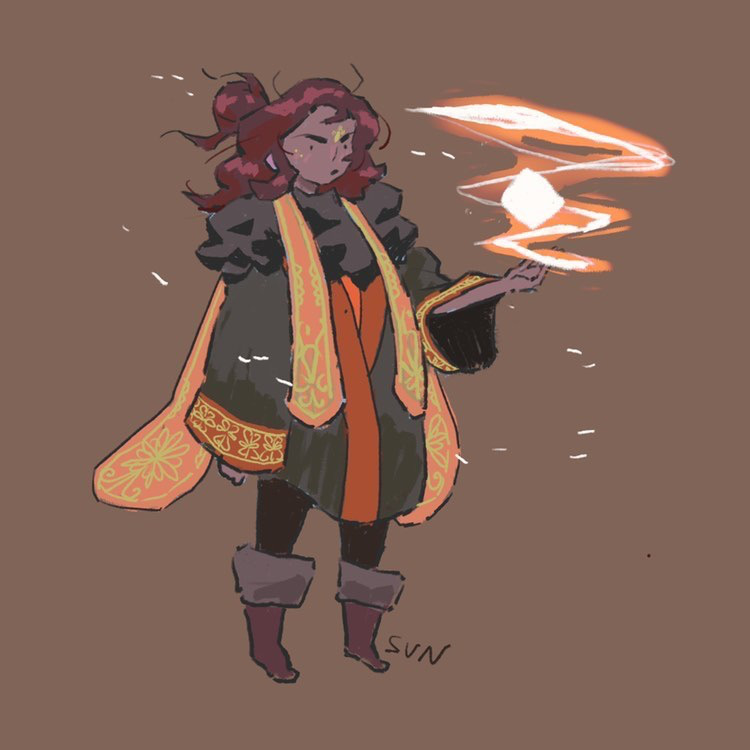Chromebark
The dense growth of Chromebark trees have overrun these tidal brine pools and turned them into shallow mangals. The metallic lustre of the canopy shimmers with every colour of the rainbow, as the chromium salt laced foliage catches what light shines through the overcast skies.Chromebark trees are the dominant species of tree that have colonised the edges of the mineral rich Turquoise Pools and have developed the area into a dense mangrove swamp, or mangal. The term "Chromebark" refers to several very similar mutated subspecies of the now extinct steelbark trees native to Aaltiera. Chromebark trees have adapted to take advantage of the chromium salts that are abundant in the saline turquoise waters. These salts, when combined with ferrous minerals from the rust red silty loams, forms a natural form of stainless steel, which the chromebark trees incorporate into their structure. Excess metal salts accumate within the leaves, giving them a shimmering, multi-hued metalic lustre.
Wind whispers through the canopy causing the leaves to rustle like tin foil. One or two are shaken loose, where they glide into the turquoise waters like rainbow hued metal ribbons.
Basic Information
Anatomy
There are two main species of Chromebark, which can be distinguished by their root structures. Lagoon Chromebarks typically grow in deeper pools of metallic brine, and grow on wide cones of thin, spindly roots. The natural stainless steel imparts considerable compressive strength, and these trees can develop wide, heavy boughs with ease. Often only one or two of these trees dominate an entire tidal pool. Littoral Chromebarks typically inhabit the shallow edges of the tidal pools. Their thick, web-like root structure constricts water flow and attracts silty deposits whenever the tide comes in. These trees tend to grow taller than their deeper water cousins as they fight for scarse scraps of natural light.
Genetics and Reproduction
Chromebarks reproduce in a similar way to coconut palms, except that the buoyant husks are composed of what is effectively steel wool.
Additional Information
Uses, Products & Exploitation
Rows of severed sprigs lie beside the low huts, coppiced from the nearby mangal grove. The metallic wood still burns well enough, leaving behind chrome steel strands among the piles of ash.Communities within the Mangal make extensive use of the Chromebark trees native to the region. Old wood is too tough to hack and hew, but young growth can be coppiced. These cuttings are pliable enough to be loosely weaved together into wattle and used as a building material. Cuttings can be burned as a source of fuel, leaving behind strands of natural stainless steel. These strands can be woven together and forged into a single object. Chromebark nuts, while tough to crack, are an efficient source of food with a long shelf life. The nuts' steel wool husks are a good thatch material. A thick, well made pair of gloves is recommended when handling chromebark nuts.
Symbiotic and Parasitic organisms
Numerous species of both flora and fauna live on, in, or around chromebarks. These include a number of arboreal vines, and the parasitic ferrous termite.










This is a great article! I love all the biology explanation around the trees and their environment. A few notes I took while reading: I'm not sure about the font colour in the quote, it's a bit hard to read though still doable. "native to Aaltiera, chromebark trees have adapted" I think you meant to start a new sentence at "native". I like your explanation of why the tree have metal in them. They must be very pretty, shimmering like that. "There are two main species pf Chromebark" you have a typo at "of" " these trees can develop wide, heaby boughs" did you mean "heavy" here? Those trees sound like a great way to mine the metal, and it must make more solid house than plain wood. On the other hand, the metal in the tree must also cool or warm the tree very quickly when temperature changes, and that would be damaging to normal plants. Have you thought about how your trees deal with that? Do the nuts have metal inside of them or is it just in the shell? A bit of metal can be good since our body needs it as micronutrients, but it becomes very toxic very quickly. Or did the body of the people feeding on that also develop some way to deal with that, just as some people developed lactose tolerance?
Thank you for the feedback, and good catch on the typos! I wrote most of this on mobile, and I tend to make more mistakes on my phone keyboard. For the quote colour, I do agree. I'm currently using the default colour for this theme, and I haven't had the chance to muck about with the CSS yet. I imagined the nuts to basically just be coconuts, but the husk is metallic. The insides are metal free. I hadn't thought about heating effects, that may be something to add later.
I like the new quotes! They really help establish the ambiance :D
Thank you!